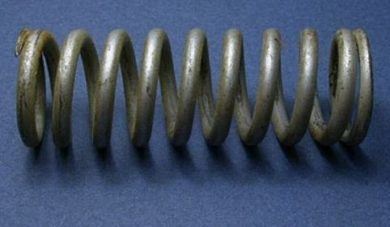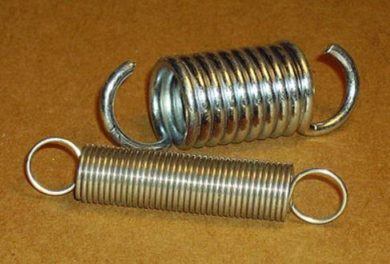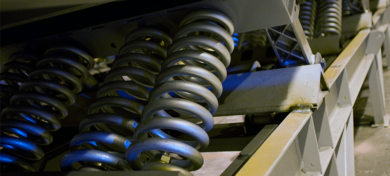At General Kinematics, we didn’t invent the use of the spring. However, over the past 60 years, we’ve set the standard for industrial vibratory products by developing springs that perform to the precise frequency needed for a specific use. Springs are typically made of a flexible material, usually metal, that returns to its original position after it is stretched, squeezed, or twisted.
The Origins of Springs
The first recorded use of coiled springs came in the 15th century with the development of clocks in which springs were used to create the tension needed to move internal gears. Around the 1800’s, it was discovered that springs could provide support by means of controlled compression and were used in chair seats and mattresses. Today, springs of all sizes are used to control movements in vehicles, large machinery, appliances, and even toys.


Small springs are wound from pre-hardened spring steel. Large industrial springs, such as those used in GK equipment, are manufactured using annealed steel that is heated to a very high temperature, wound to exact specifications using a CNC (computer numerical control) machine, and then cooled to harden into shape.
The size, number, and diameter of the coils, as well as the distance between each coil, determines the amount of weight the spring can handle along with the range of movement. The design of the spring can also determine the frequency, or speed, of the spring’s response rate as well as the harmonics, or rhythm, of the motion.
In the case of vibratory equipment, if the frequency of the spring is too fast, the machine might shake itself apart. If the frequency of the spring is too slow, the machine may dampen to the point that it will no longer convey the material. General Kinematics expertly balances their equipment using the natural frequency to benefit the process.
The Use of Springs at GK
Vibratory equipment operates at various speeds and degrees of intensity depending on the type of product that it is meant to convey, the maximum weight at any given moment and the application. GK’s engineers have made a science of calculating the harmonic motion needed to accomplish the machine’s task and then uses scientific formulas, such as Newtonian mechanics and Hooke’s law, to determine the exact design for their springs.
All vibratory equipment will utilize a combination of drive springs, reactor springs, and isolation springs. To the human eye, it might be impossible to determine the compression rate and other factors for which a particular spring is designed. That’s why a color-coding strategy is used to avoid confusion during the ordering and replacement of springs.
Because GK springs accept universal mounting configurations, they can also be used on non-GK vibratory equipment based on the manufacturer’s equipment specifications. It is also important to note that the same precision and quality is designed into GK’s premium bearings, stabilizers, and bushings. Check out this video on how to assess wear issues and to safely change a spring.
At GK, we offer a complete line of replacement parts and fabrications for vibratory and rotary process equipment; and many parts are available for immediate shipping to keep your system running.
For more information on General Kinematics equipment, service, or parts, visit the GK Technical Center where you will find videos and resources to help you make informed decisions about your vibratory equipment. Or call GK to talk to a vibratory expert today!







